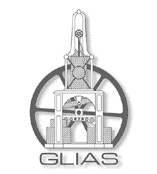Tower Bridge

Site ID :- GTL00001
Key Words :- Bascule Bridge
Linked Sites :-Address :- Tower Bridge, London, Greater London, SE1 2UP
Grid Reference :- TQ3362280137
Grid Co-ordinates :- Easting 533622 m, Northing 180137 m
Lat & Long (WGS84) :- 51.504378 , -0.076147
View Historic Mapping
Site Location :-
Viewing Site :-
Parish or Township :-
Administrative Area :- \r\n Tower Hamlets London Borough Council
Pre 1974 County :- Greater London Council
Site Status :- Listed - Grade I
Site Condition :- Operational site, in use for original purpose
Historic England List No - 1385980, 1357515, 1385982, 1065833, 1385981,
Site Era :-Early Modern 1850-1950 to Modern Post 1950
Site Dates :- 1894 -
Visit By :- -
Contributor :- GLIAS Database - 2 June 2018
Contributor's Society :- Greater London Industrial Archaeology Society
Copyright :- cc-by-nc-sa 4.0 © GLIAS Database
Record Status :- Reviewed
Reviewed By :- Andrew Turner - 25 November 2019
Description and History
World famous bridge over the Thames connecting the City of London to Bermondsey. Built 1886-1894 by Sir John Wolfe Barry, Engineer and Sir Horace Jones, Architect. Following Jones' death in 1887 the architectural detailing was completed by Stevenson, one of Wolfe Barry's assistants. Design selected following an architectural competition with a brief of allowing sailing vessels access to the Pool of London whilst keeping in sympathy with the Tower of the Tower of London. The design is a complex mixture of bascule, girder and suspension principles. Non-structural stonework conceals steel semi-suspension bridge. Until 1967 the twin bascules were raised via hydraulic engines in the basement piers of each tower. Hydraulic power being provided by two Sir W.G. Armstrong Mitchell & Co of Elswick Newcastle tandem steam engines sited along with their Lancashire boilers in the arches below the southern approach road. This complex is preserved in situ. A third engine was added later but removed to Forncett steam museum in Norfolk in 1974. The twin overhead walkways were designed to permit foot passengers to cross even when the bascules were raised. The bridge was electrified in 1976 and parts were opened as a museum in 1982. Hydraulic lifts in towers gave access to overhead walkway, closed to public since turn of century until recent tourist developments. Hydraulic power station, TQ 336802, remains on south side of river east of Tower Bridge Rd. Distinctive chimney and tower with accumulators still in situ.
Building began in 1886, opened in 1894.
Further Reading and References
Ashdown, John; Bussell, Michael; Carter, Paul. 'A Survey of Industrial Monuments of Greater London'. Thames Basin Archaeological Observers' Group, 1969
Cossons, Neil. 'The BP Book of Industrial Archaeology'. David & Charles, 1975
Falconer, Keith. 'Guide to England's Industrial Heritage'. Batsford, 1980
https://www.towerbridge.org.uk/bridge-history/
No comments have been made about this entry
Go Back
Grid Reference :- TQ3362280137
Grid Co-ordinates :- Easting 533622 m, Northing 180137 m
Lat & Long (WGS84) :- 51.504378 , -0.076147
View Historic Mapping
Site Location :-
Viewing Site :-
Parish or Township :-
Administrative Area :- \r\n Tower Hamlets London Borough Council
Pre 1974 County :- Greater London Council
Site Status :- Listed - Grade I
Site Condition :- Operational site, in use for original purpose
Historic England List No - 1385980, 1357515, 1385982, 1065833, 1385981,
Site Era :-Early Modern 1850-1950 to Modern Post 1950
Site Dates :- 1894 -
Visit By :- -
Contributor :- GLIAS Database - 2 June 2018
Contributor's Society :- Greater London Industrial Archaeology Society
Copyright :- cc-by-nc-sa 4.0 © GLIAS Database
Record Status :- Reviewed
Reviewed By :- Andrew Turner - 25 November 2019
Building began in 1886, opened in 1894.
Cossons, Neil. 'The BP Book of Industrial Archaeology'. David & Charles, 1975
Falconer, Keith. 'Guide to England's Industrial Heritage'. Batsford, 1980
https://www.towerbridge.org.uk/bridge-history/
